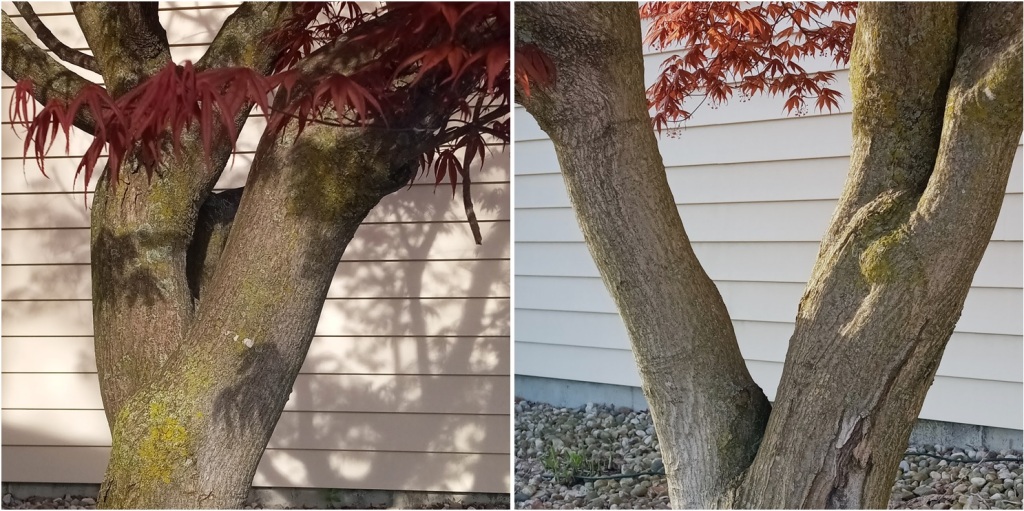
In the days of film (in rolls or cassettes) cameras, beginners were advised to keep the sun or other main light source behind the lens or to the back of the photographer. The result is strong colors, vivid texture, and clear definition of the subject, as in the left half of the illustration, above. By photographing to the side, however, the unlit surfaces of the tree present a different look. There is still enough light to see the contours of the tree and indeed the textures of its surfaces. But the light coming into the shaded area is bouncing off some other surfaces nearby, in addition to the blue sky overhead. The result of this weaker light as seen on the right half of the illustration, above, is generally softer and with less strident contrast than the picture next to it. Additionally, the color temperature of the light in full sun on tree and wall differs to the penumbral light seen in the shaded side of the tree backed by the vinyl siding of the building. Thus, certain subjects look best in contrasty, direct light; but others present their best side to the camera in softer or indirect sources of light.
In the specific case of portrait photography, the most flattering light is indirect or else is diffused by overcast skies; north-facing windows (if northern hemisphere) also are favored by visual artists since that light bouncing off the sky is more constant and milder on the subject being painted, photographed, or sculpted. On the other hand, a portrait of a powerful subject may look best in contrasty lighting conditions to impose a tension or drama to the representation. Thus, the type of subject dictates what lighting works best to convey the subject to viewers.
Turning to the above photos of a Japanese maple, what sorts of things are communicated by the strong light versus the weak light? Bark surface, fungi, and leaf shadows are vividly present when compared to the side view of the tree out of the direct sunlight. In other words, the physicality and particularity of this tree stand out in strong light. The softly lit view does not emphasize these exterior qualities as much. So the viewer sees the tree and can more easily engage with the idea of trees in general, not just this single specimen. Perhaps the strong light is more static as a “frozen moment” while the diffuse, weaker light is more dynamic, allowing a viewer to run her or his eyes from point to point, with each saccade to form a continuous impression of the subject, rather than a single instant burned into one’s imagination. In the same way, a brightly lit restaurant makes every visual element vivid and fixed in its place. But the candlelit restaurant is a bit dreamier and the boundaries that define the experience seem less rigid.
Maybe a similar effect of strong direct illumination versus weak indirect illumination also applies to the world of discussion, writing, and thinking more generally; not just to visual communication. In other words, approaching a topic head on and using strong tools of measurement, analysis, and distillation produces one kind of understanding; Positivism and Empiricism to oversimplify. Most of the modern world system comes from logic, reasoning, and applied sciences for problem solving in the physical (and fiscal) sphere of existence. And yet, there is more to lived experience, the communities of plants and animals, and the workings of matter that escape human inspection and perception than what is tangible or able to be captured in the language of math and physics. In order to approach things outside the reach of strong direct illumination, taking an indirect approach with weaker illumination may offer glimpses, hints, or signs of more than can meet the eye. And while a direct analogy between strong-weak light does not lend itself fully to conversation and thinking, at least there is value in positing illumination other than strong, direct light. After all, referring back to the two versions of the above maple tree, the same subject really does present a different picture when seen in a new light.
